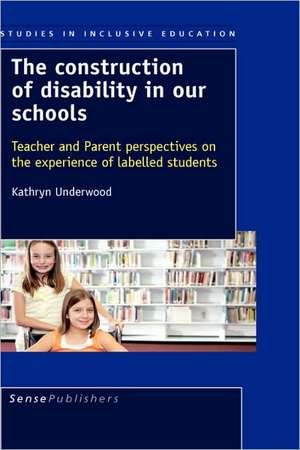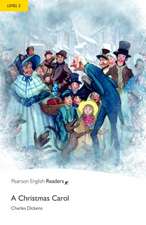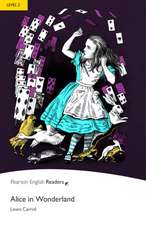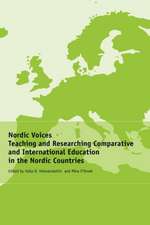The Construction of Disability in Our Schools
Autor Kathryn Underwooden Limba Engleză Hardback – 29 apr 2008
| Toate formatele și edițiile | Preț | Express |
|---|---|---|
| Paperback (1) | 398.11 lei 38-44 zile | |
| Brill – 31 dec 2007 | 398.11 lei 38-44 zile | |
| Hardback (1) | 567.02 lei 38-44 zile | |
| Sense Publishers – 29 apr 2008 | 567.02 lei 38-44 zile |
Preț: 567.02 lei
Preț vechi: 700.02 lei
-19% Nou
Puncte Express: 851
Preț estimativ în valută:
108.51€ • 112.64$ • 90.48£
108.51€ • 112.64$ • 90.48£
Carte tipărită la comandă
Livrare economică 18-24 martie
Preluare comenzi: 021 569.72.76
Specificații
ISBN-13: 9789087902216
ISBN-10: 9087902212
Pagini: 208
Dimensiuni: 156 x 234 x 13 mm
Greutate: 0.47 kg
Editura: Sense Publishers
Locul publicării:Netherlands
ISBN-10: 9087902212
Pagini: 208
Dimensiuni: 156 x 234 x 13 mm
Greutate: 0.47 kg
Editura: Sense Publishers
Locul publicării:Netherlands
Descriere
Descriere de la o altă ediție sau format:
This book is about the meaning of disability in schools. The experience of children with disabilities in schools has undergone substantial change over the last twenty years (and more) with many children who would have once been living in institutions now going to school alongside their peers. With this monumental shift and the continuing increased participation of people with disabilities, one might wonder what disability means. In the age of institutionalisation disability referred to those people who were not able to actively participate in society. As it turns out, many of the people who were deemed unable to participate were so only because the society in which they lived had kept them from active participation through institutionalisation. In Ontario, Canada, where the author lives and works, many adults with disabilities continue to live in institutions and are also active in their communities. So it is not just the institutions that “disable” people. There are many reasons that people fall into the classification of “disabled” and for some this classification begins in an institution, often in the institution of school. This book explores the different beliefs that teachers and parents hold about disability and the types of barriers that cause disability, and how these beliefs translate into education practice.
This book is about the meaning of disability in schools. The experience of children with disabilities in schools has undergone substantial change over the last twenty years (and more) with many children who would have once been living in institutions now going to school alongside their peers. With this monumental shift and the continuing increased participation of people with disabilities, one might wonder what disability means. In the age of institutionalisation disability referred to those people who were not able to actively participate in society. As it turns out, many of the people who were deemed unable to participate were so only because the society in which they lived had kept them from active participation through institutionalisation. In Ontario, Canada, where the author lives and works, many adults with disabilities continue to live in institutions and are also active in their communities. So it is not just the institutions that “disable” people. There are many reasons that people fall into the classification of “disabled” and for some this classification begins in an institution, often in the institution of school. This book explores the different beliefs that teachers and parents hold about disability and the types of barriers that cause disability, and how these beliefs translate into education practice.














